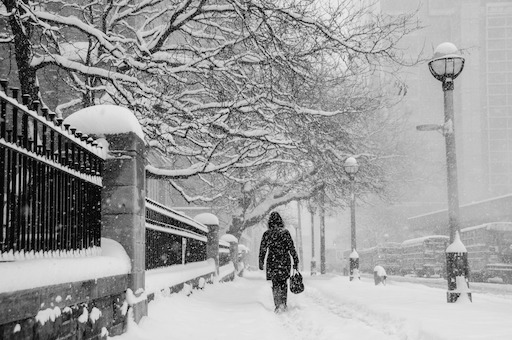With Environment Canada’s forecast calling for wind chill temperatures below -30°C tonight and into Tuesday morning, KFL&A Public Health is issuing a Cold Weather Health Warning for the KFL&A region. This is the coldest air so far this season, more northern areas in our region such as Plevna and Sharbot Lake may see wind chill temperatures dip to -35°C.
Cold Weather Health Warnings are issued through the media by KFL&A Public Health when the temperature is forecast to be -25°C or colder or when a wind chill of -28°C or colder is forecast for the KFL&A region by Environment Canada. When the temperature drops below -25°C or the wind chill is below -28°C, children and seniors should take precautions to avoid the effects of the cold, or be kept indoors to avoid cold injuries. KFL&A Public Health also works with community service providers, municipalities, schools, long-term care homes, and emergency service providers to ensure that vulnerable groups are taken into consideration.
Very cold weather brings an increased risk of hypothermia for people who stay outside for long periods of time without adequate protection. Overexposure to cold temperatures can result in severe injury. People at greatest risk from cold injuries include infants, the elderly, homeless, outdoor workers, recreation enthusiasts and people who consume excess alcohol.
The Medical Officer of Health recommends that you take the following actions to prevent cold injuries, such as hypothermia and frostbite:
- Wear several layers of clothing and make sure that the outer layer protects you from wind and wetness.
- Cover exposed skin (with hats, mittens, face mask) to protect against frostbite.
- Drink warm fluids that do not contain caffeine or alcohol, to prevent dehydration.
- Maintain a heated indoor environment above 20°C; hypothermia can even occur indoors when temperatures are 16°C (61°F) or lower.
- Avoid outdoor strenuous exercise during cold spells.
- Check frequently on elderly and vulnerable people; ensure they are in a safe and warm environment.
- Know the signs of frostbite and hypothermia—know what to do!
Frostbite
Frostbite is an injury to the skin that is caused by freezing. The risk of frostbite increases when the wind chill rises. Early signs include pink or reddish areas that may feel numb. As frostbite progresses, the affected area will become white and waxy in appearance.
If you suspect frostbite, move to a warm area out of the wind and gently re-warm the affected area using your own body heat; the affected area should not be rubbed, as rubbing can cause more damage. Medical help should be sought if the area does not return to normal colour or sensation quickly.
Hypothermia
Hypothermia occurs when the body is exposed to cold temperatures, and it begins to lose heat faster than it can be produced. The result is an abnormally low body temperature that can affect brain and muscle function. Hypothermia can be dangerous as a person may not be aware that it is happening and may not understand that corrective action is necessary. An adult who stumbles, mumbles and fumbles objects may be suffering from hypothermia.
If hypothermia is suspected, the affected person should be moved to a warm location, and any wet clothing removed. The individual should be covered with several layers of blankets and offered a warm, non-alcoholic, non-caffeinated drink if he or she is able to swallow. A person with severe hypothermia may be unconscious and if a pulse can’t be found in the neck, 9-1-1 should be called and CPR began immediately. Knowing what to do is an important part of protecting your health and the health of others. This warning is in effect as long as the extreme weather conditions exist.
More information on protective measures can be found on KFL&A Public Health’s website www.kflaph.ca.

